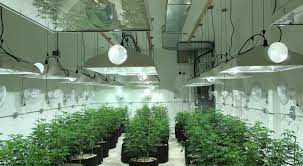Cannabis climate control is a critical component of cultivating high-quality cannabis. The proper management of the climate can greatly influence the development, potency, as well as the overall wellbeing of cannabis plants. This article will help you know about cannabis climate control cultivation.
1. The temperature: Cannabis plants thrive in certain temperatures. In the vegetative phase, temperatures should ideally be between 70-85degF (21-30degC) during the day and a little cooler at night. In the flowering stage it’s recommended to lower temperatures a bit, but ideally between 65 and 80degF (18-27degC). Extreme temperatures can strain plants, which can result in reduced growth and lower yield. Use thermostats and fans to keep the temperature at a comfortable level and also consider using air conditioners or heaters when growing in a controlled indoor space.
2. Humidity: Humidity plays a important role in cannabis development. During the vegetative stage, it is recommended that the humidity (RH) should be around 40-70%. High humidity promotes healthy growth, but too much humidity can cause mold and mildew. In the flowering stage it is crucial to reduce humidity to avoid bud rot. try to achieve 40-50% RH. Humidifiers and dehumidifiers will help manage these levels, making sure that the plants get the correct amount of moisture.
3. Ventilation and airflow The proper circulation of air is crucial to prevent issues like mildew and mold. Good ventilation helps to improve the strength of plant stems and also ensures even distribution of CO2, which is essential for photosynthesis. Utilize oscillating fans for circulation of air, and exhaust fans to take out hot air while maintaining fresh air flow. For indoor settings, consider using carbon filters to reduce the smells and to ensure a smooth air exchange.
4. Light: Light is another key factor for cannabis cultivation. Cannabis plants require a particular light cycle based on their growth stage. During the vegetative stage, the plants require between 18 and 24 hours of light per day. In the stage of flowering, they need 12 hours of light and 12 hours of darkness. High-intensity discharge (HID) lights, lighting emitting diodes (LEDs) along with compact fluorescent lights (CFLs) are common options for indoor cultivators. A proper light intensity and spectrum are crucial for maximizing plant health and yield.
5. CO2 Levels: Carbon dioxide is essential for photosynthesis and plant growth. In a controlled setting adding CO2 to the mix can improve yield and growth of plants. This is particularly important in sealed indoor setups where the natural CO2 levels may be inadequate. CO2 can be added by various methods, such as CO2 tanks or generators but it’s crucial to monitor levels to prevent poisoning.
6. The pH as well as the Nutrient levels: While not a purely a climate control factor, monitoring pH and nutrient levels is essential. It is essential that the pH level of your medium for growth must be maintained in between 6.0 between 6.0 and 7.0 to ensure maximum nutrient uptake. Regularly check and adjust nutrient levels to support healthy growth and development of the plant.
In summary In short, effective grow room hvac design involves managing temperatures, humidity, airflow, light levels, and CO2 levels. By maintaining these factors within their optimal ranges it is possible to promote healthy plant growth, maximize yield, and enhance all-around quality in your cannabis.

